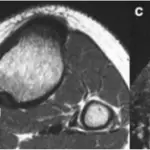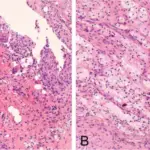Fibrous dysplasia is a disorder where normal bone and marrow are replaced with fibrous tissue, resulting in the formation of bone that is weak and prone to expansion.
What is the Pathology of Fibrous Dysplasias?
The pathology of fibrous dysplasias is:
-Etiology: The cause of fibrous dysplasias has been linked with a missense mutation in the GNAS1 gene on chromosome 20.
-Genes involved: GNAS1.
-Pathogenesis: The sequence of events that lead to fibrous dysplasias involves the replacement of normal bone and bone marrow by fibro-osseous lesions.
-Histology: The histology associated with fibrous dysplasias shows anastomosing and branching irregular trabeculae of woven bone without osteoblastic rimming.
How does Fibrous Dysplasias Present?
Patients with fibrous dysplasias typically affect both males and females in the first three decades of life. The symptoms, features, and clinical findings associated with fibrous dysplasias include limp, pain, and/or pathologic fractures.
How are Fibrous Dysplasias Diagnosed?
Fibrous dysplasias is diagnosed by radiologic imaging and biopsy.
How are Fibrous Dysplasias Treated?
Fibrous dysplasias are treated by usually symptomatic management, or surgery in cases with a fracture or bony deformity.
What is the Prognosis of Fibrous Dysplasias?
The prognosis of fibrous dysplasias is widely variable as the disorder itself and is based on the bones affected, whether other structures such as nerves are affected, and whether fractures occur.



